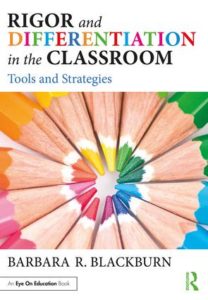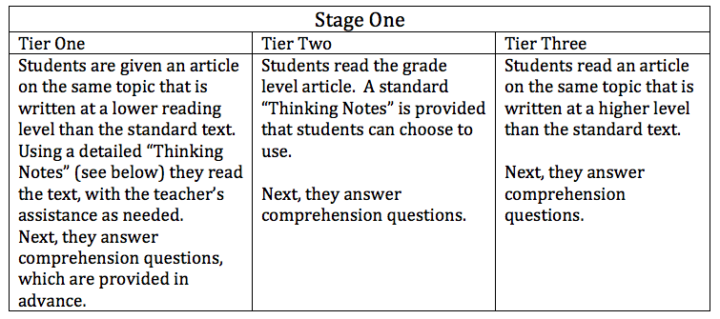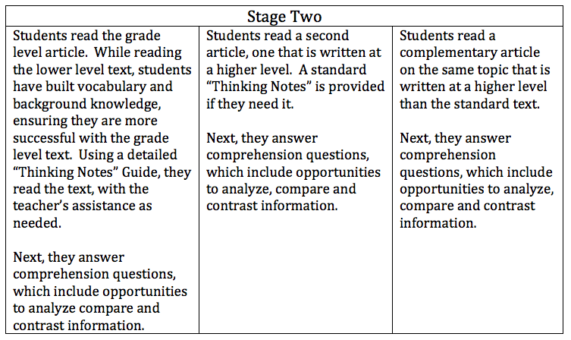How to Teach Them All Without Sacrificing Rigor
 By Barbara R. Blackburn
By Barbara R. Blackburn
The most common complaint about differentiation is that – by trying to teach students at their current level, especially struggling students – teachers lower their expectations and decrease the amount of rigor.
As one principal shared with me, “I don’t think we meant for it to happen, but we are ‘dumbing down’ instruction for our struggling students and those with special needs.”
That is why we need to address the role of rigor in the differentiated classroom. If the goal of differentiation is to help students learn and grow, then we cannot lower the bar just because that makes it easier for them. In Rigor is Not a Four Letter Word, I define rigor as “creating an environment in which…
- each student is expected to learn at high levels,
- each student is supported so he or she can learn at high levels, and
- each student demonstrates learning at high levels.
In order to ensure that a differentiated classroom is truly rigorous, we can blend Tomlinson’s differentiation concepts with the definition of rigor into a new framework. Let’s take our definition of rigor and overlay the three main aspects so they align with three ways to differentiate.

An Example of Tiering
Let’s assume you want to ensure high expectations for everyone, and you would like the final result to be the same assignment for all students. In the sample lesson below – in both the standard version and a revised version – the teacher ultimately differentiates by using a variety of support structures and activities. For this example, we will focus on reading and understanding informational text, such as an article.
Standard Lesson
In a typical lesson on reading an informational article, the teacher would activate prior knowledge to determine what students already know about the topic, which in this case is oceans. He or she might lead a short discussion on oceans, providing additional context for students. Then students are asked to read the article on oceans, which is written on grade level.
For some students the article is too easy, for some it is too difficult, and for others it is just right. This does not meet the needs of most students. Now let’s look at a revised lesson with tiering incorporated into the activity, with differing support, and using different resources.
Revised Lesson Part One
In a revised lesson on reading an informational article about oceans, the teacher would activate prior knowledge to determine what students already know about the topic. Some students might complete an anticipation guide, while those students with more advanced knowledge might write a fact sheet with key information. Other students watch a short video about oceans to build their knowledge base.
Tiered Activities
Next, students will read the informational article provided. However, in order to build to rigor, there are two stages of reading, with two texts. The teacher rotates to assist each group as needed. In these tiers, students are working at Levels One and Two of Webb’s Depth of Knowledge.
Final Activity/Task
Students then regroup for a whole class discussion of oceans, which includes questions specific to all articles. This ensures that all students have an opportunity to participate, no matter the tier. These questions focus on comprehension, but the discussion begins to incorporate Level 3 Questions, such as asking students to connect information they learned to their real-life experiences. They are also asked to justify their earlier responses based on the texts, explaining why they answered the way they did.
A Last Note
Providing differentiated instruction to meet the needs of all learners is at the heart of teaching. In order to ensure achievement for each student, we must create learning opportunities that help each one succeed. However, in the process of differentiating instruction, we must be certain that we do not lower the rigor for students who are struggling. By using different support, in terms of resources and scaffolding strategies, we can hold students to high expectations, and students can demonstrate their learning in rigorous ways.
______________________________________






































Thanks a lot for sharing these great ideas. It was nice to see a standard approach then followed up with a best practice.